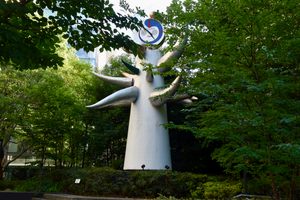About
Hibiya Park is a large public park situated near the Imperial Palace, an oasis among the metropolitan hustle and bustle of Tokyo. Established in 1903, it’s home to a century-old restaurant, an extensive library museum, Japan’s oldest open-air concert hall, and statues of Philippine revolutionary Jose Rizal and the She-wolf of Rome, as well as an unusual array of stone monuments.
One of the most notable specimens is the Rai stone, also known as the “stone money of Yap Island.” About 4.5 feet in diameter, the Micronesian oddity was once used as a sort of ceremonial currency on Yap on such occasions as weddings. Reportedly, it was “gifted” to Japan in 1925 when the island was under Imperial Japanese administration as part of the South Seas Mandate.
Not far away, there is also a piece of rock on the side of the walking path. It is an authentic Antarctic rock, collected on East Ongul Island by the research expedition team and brought to Hibiya Park in 1966.
Next to the Antarctic rock is a tall replica of a Nordic runestone, gifted to the park by the Scandinavian Airlines in 1967 in commemoration of the establishment of the polar route. Another oddity, which can be found near one of the north exits, is a fossilized piece of pinewood called the Matsuishi (literally “pine stone”). Found in Fukuoka Prefecture, the fossil is believed to date back 30-50 million years.
All genuine pieces of natural and cultural history (except one, at least), the stone monuments of Hibiya Park are worth checking out for a moment when taking a stroll through the park.
Related Tags
Hidden Japan: Sado Island, Nara & Kyoto
Explore a different side of Japan.
Book NowCommunity Contributors
Added By
Published
May 18, 2023




























